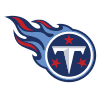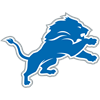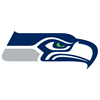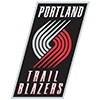Fantasy football managers often overreact to the early part of the season. Smart players know how to take advantage of those reactions by identifying the right buy or sell targets. Whether it's a slow beginning or a misleading breakout, this is the best time to trade before narratives get locked in. Checking updated weekly projections can help frame which players are primed to rebound or fade. Here are the best buy low sell high fantasy football targets heading into Week 3.
Buy Candidates
Quarterback
Many fantasy managers are scrambling after losing a starting quarterback. Stafford, coming off a back injury and limited preseason, shook off rust with 298 yards and two scores in Week 2. He offers little rushing value, but his passing ceiling remains strong. With Davante Adams and Puka Nacua, defenses may struggle to slow this attack.
Running Back
Jacobs has back-to-back 14-point PPR games, but no breakout yet. That consistency may frustrate managers who expected fireworks, but Green Bay's offensive line will get healthier, and Jordan Love's deep passing will help soften fronts. A friendly upcoming schedule makes Jacobs a great buy-low candidate.
Hall exploded in Week 1 but struggled in Week 2 against Buffalo. One poor outing against a strong defense doesn't change his elite talent. The preseason timeshare talk with Braelon Allen has proven irrelevant, and Hall remains a dominant runner and receiver with a favorable schedule ahead.
Wide Receiver
Ridley has underwhelmed early despite
Fantasy football managers often overreact to the early part of the season. Smart players know how to take advantage of those reactions by identifying the right buy or sell targets. Whether it's a slow beginning or a misleading breakout, this is the best time to trade before narratives get locked in. Checking updated weekly projections can help frame which players are primed to rebound or fade. Here are the best buy low sell high fantasy football targets heading into Week 3.
Buy Candidates
Quarterback
Many fantasy managers are scrambling after losing a starting quarterback. Stafford, coming off a back injury and limited preseason, shook off rust with 298 yards and two scores in Week 2. He offers little rushing value, but his passing ceiling remains strong. With Davante Adams and Puka Nacua, defenses may struggle to slow this attack.
Running Back
Jacobs has back-to-back 14-point PPR games, but no breakout yet. That consistency may frustrate managers who expected fireworks, but Green Bay's offensive line will get healthier, and Jordan Love's deep passing will help soften fronts. A friendly upcoming schedule makes Jacobs a great buy-low candidate.
Hall exploded in Week 1 but struggled in Week 2 against Buffalo. One poor outing against a strong defense doesn't change his elite talent. The preseason timeshare talk with Braelon Allen has proven irrelevant, and Hall remains a dominant runner and receiver with a favorable schedule ahead.
Wide Receiver
Ridley has underwhelmed early despite averaging seven targets per game. Matchups with Denver and Los Angeles left rookie QB Cam Ward little chance to succeed. Ridley is still coming off consecutive 1,000-yard seasons, and with softer defenses ahead, he should return to reliable WR2 production.
Olave has 22 targets in two games with limited production, although a missed touchdown last week could have flipped his outlook. Rookie QB Spencer Rattler has been forced to throw heavily due to poor defense, and with volume this high, Olave should break through sooner rather than later.
Tight End
A slow start and an IR stint due to a hamstring injury may have managers panicking. Kittle may not return until Week 5 (or later), but he remains a difference-maker. Buying now for depth pieces could pay off late; his playoff upside is worth the gamble.
Sell Candidates
Quarterback
Goff shredded Chicago in Week 2, but context matters: the Lions' offensive line and schedule are major concerns going forward. Goff collapses under pressure more than most quarterbacks, and now is the perfect time to capitalize on his inflated value.
Running Back
Harvey flashed with a 50-yard run in Week 1, but he's only playing about 31 percent of snaps and splitting backup work with Tyler Badie. With J.K. Dobbins leading the backfield, Harvey is a sell on early season hope. His value may still be fair due to the big play in the season opener.
Wide Receiver
Williams flashed explosiveness with 108 yards and a score last week. However, he had just four targets and disappeared for much of the game. Detroit's passing attack struggles when pressured, and Williams remains dependent on deep shots. His volatility makes him a prime sell candidate.
Kupp rebounded in Week 2 with 90 yards against a depleted Steelers defense. That game script won't repeat often, making his value matchup-driven. Week 1's quiet outing is more in line with expectations. This may be the last chance to trade him at fair value.
Hunter has volume, averaging seven targets per game, but limited yardage. His role is currently confined to short passes with little explosiveness. QB Trevor Lawrence has been inconsistent despite easy matchups, and with hype surrounding Hunter, managers may overpay based on name value.
Tight End
Engram struggled to make an impact since returning from a Week 1 calf injury. He's playing limited snaps and competing with a deep WR group. At 31 years old, his best days may be behind him. Let someone else bet on Sean Payton unlocking Engram's ceiling.
Conclusion
The key to winning trades is acting before market perception settles. Knowing which players are set to rebound and which are riding unsustainable performances is crucial in fantasy football trade strategy. Staying ahead of the curve with NFL depth charts ensures you don't miss opportunities. Whether you're targeting a buy-low, sell-high fantasy football candidate or flipping a player at peak value, timing is everything.
Looking for more trade advice? Check this out:


































